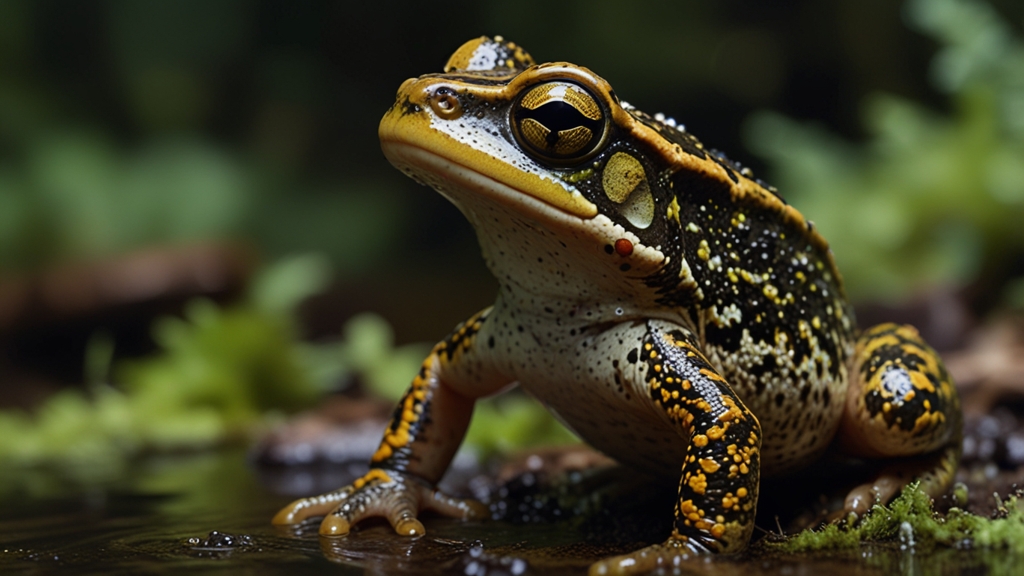The Role of Amphibians in Ecosystems You Never Considered
Amphibians are a fascinating group of animals that include frogs, toads, salamanders, and newts. While often overshadowed by mammals, birds, and reptiles, they play a crucial role in the health and stability of ecosystems. These animals are unique in their ability to live both in water and on land, presenting an array of ecological functions that many of us don’t often consider. This article delves into the vital roles amphibians play in our ecosystems.
Bioindicators of Ecosystem Health
One of the most significant roles that amphibians play in ecosystems is that of bioindicators. Because amphibians have permeable skin and a life cycle that involves both aquatic and terrestrial environments, they are incredibly sensitive to environmental changes. This makes them excellent indicators of ecosystem health.
"Amphibians are like canaries in a coal mine," explains Dr. Jane Smith, a renowned ecologist. "Their presence or absence is often a signal of the overall health of an ecosystem."
Scientists use amphibians to monitor the effects of pollutants, habitat destruction, and climate change. The health and population trends of amphibians can provide early warning signs of ecological distress, prompting conservation actions before more extensive damage occurs.
Pest Control Agents
Amphibians play an essential role in controlling insect populations. Frogs and toads, for example, consume large quantities of insects, including mosquitoes, flies, and agricultural pests. This natural pest control helps to maintain balanced ecosystems and can even reduce the need for chemical pesticides.
By controlling insect populations, amphibians indirectly benefit human populations by reducing the spread of insect-borne diseases such as malaria and dengue fever. This pest control also supports agriculture by minimizing crop damage from insects.
Nutrient Cycling
Amphibians contribute to nutrient cycling within ecosystems. As they consume insects and other small animals, they help to break down and recycle nutrients. When amphibians excrete waste, these nutrients return to the soil and water, benefiting plants and microorganisms.
"Amphibians play a key role in decomposing organic matter and redistributing nutrients within aquatic and terrestrial ecosystems," says Dr. Emilia Johnson, an environmental scientist. "Their role in nutrient cycling is indispensable for maintaining ecosystem productivity."
This nutrient cycling helps to build healthy soils and supports the growth of plants, which in turn supports herbivores and the larger food web.
Prey and Predator Dynamics
Amphibians occupy important positions in both aquatic and terrestrial food webs. As predators, they keep populations of insects and other small invertebrates in check. As prey, they provide essential food resources for a variety of animals, including birds, mammals, reptiles, and even fish.
Their role as both predator and prey helps to maintain balanced and dynamic ecosystems. Disruptions to amphibian populations can have cascading effects, impacting the survival and reproductive success of other species.
Medicinal Contributions
Aside from their ecological roles, amphibians have also contributed significantly to medicine. The unique properties of amphibian skin secretions have led to the development of antibiotics, painkillers, and other pharmaceuticals. Research into amphibian-derived compounds continues to offer promising prospects for medical science.
For instance, peptides from frog skin are being studied for their potential to combat antibiotic-resistant bacteria. This highlights another dimension of the importance of conserving amphibian populations as a reservoir of biomedical potential.
Conclusion
Amphibians are unsung heroes of the natural world, performing a variety of functions that keep ecosystems balanced and thriving. From serving as bioindicators and pest controllers to contributing to nutrient cycling and offering medical insights, their ecological and societal importance cannot be overstated.
Threats to amphibians, such as habitat loss, pollution, climate change, and disease, underline the urgent need for conservation efforts. Protecting these versatile creatures is not just about saving individual species, but about maintaining the intricate and delicate balance of our ecosystems.










